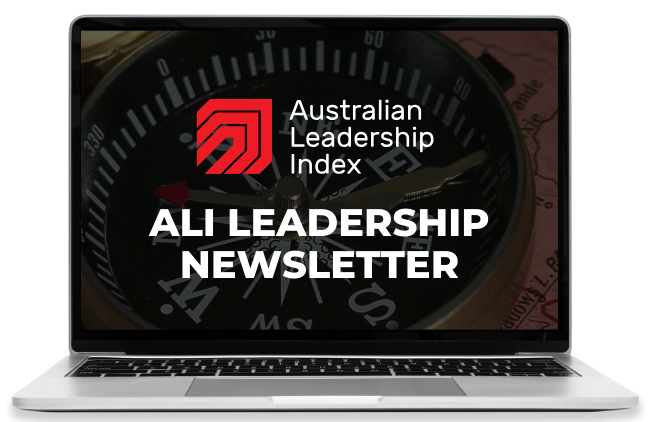Metrics glossary
The index
The Australian Leadership Index measures overall leadership, and its three drivers, integrity, contribution, and competence.
Understanding the results
The index is designed to be easy to understand for all Australians, regardless of their background or previous experience with data.
Our survey is nationally representative by age, gender, and state. It asks respondents to rate the leadership performance of 4 randomly assigned institutions (out of a possible 25).
Respondents rate each institution’s performance on leadership and its drivers using a 0-10 scale (including a Don’t Know option).
To calculate the score for each metric, we take the mean from an 11 point scale (0-10) and convert it to a score ranging from 0-100.
This gives us a score which represents how people rate the performance of an institution on a particular component of leadership.
Scores closer to 100 represent strong performance, while scores closer to zero represent poor performance.
For each institution and sector, we also report the gap between the insitution or sector score, and the unfiltered national score. This provides a benchmark for institution and sector performance, and allows us to identify institutions and sectors that are performing or underperforming.
Leadership
The metric ‘leadership’ refers to judgements made about an institutions’ leadership performance, leadership for the greater good, and creation of public value.
Captures how people rate the overall performance of an institution when it comes to leadership.
Asks people to rate the extent to which an institution is engaging in leadership for the greater good.
By ‘leadership for the greater good’, we are referring to when institutions make decisions, take actions, or develop policies that benefit or foster the well-being of the public, community, and society at large, rather than their own vested interests.
Captures the extent to which an institution provides value for the public, community, or society at large.
Integrity
The metric ‘integrity’ refers to judgements made about an institution’s transparency, accountability, trustworthiness, and several other factors.
The extent to which an institution is transparent about their decisions, actions, and policies.
The extent to which an institution has genuine motives.
The extent to which an institution is honest about their intentions
The extent to which an institution can be depended on to act in the best interests of society.
The extent to which an institution is a reliable source of information.
The extent to which an institution is legitimate (lawful, acceptable and reasonable).
The extent to which an institution is accountable for its decisions, actions, and policies.
The extent to which an institution behaves in an ethical manner.
The extent to which an institution serves the interests of everyone fairly.
The extent to which an institution cares about people in the community.
The extent to which an institution can be trusted to do the right thing.
The extent to which an institution behaves in a way that is responsible.
Contribution
The metric ‘contribution’ refers to judgements made about an institution’s contribution to financial outcomes, societal welfare, environment, and several other factors.
The extent to which an institution generates positive financial outcomes.
The extent to which an institution creates employment opportunities.
The extent to which an institution is a leader in technological innovation.
The extent to which an institution produces valuable knowledge.
The extent to which an institution educates people.
The extent to which an institution looks after people’s health and wellbeing.
The extent to which an institution improves the welfare of society.
The extent to which an institution encourages cultural inclusion.
The extent to which an institution improves environmental sustainability.
The extent to which an institution actively reduces their impact on the environment.
Competence
The metric ‘competence’ refers to judgements made about an institution’s contribution to purpose, skill, efficiency, value creation, and several other factors.
The extent to which an institution has a clear purpose for existence.
The extent to which an institution has a clear vision for the future.
The extent to which an institution demonstrates a high level skill.
The extent to which an institution is reliable when making decisions.
The extent to which an institution operates in an efficient manner.
The extent to which an institution actively engages with citizens.
The extent to which an institution complies with relevant governance and legal requirements.
The extent to which an institution generates value for their stakeholders.
The extent to which an institution creates a high degree of satisfaction for those who engage with it.
The extent to which an institution provides services that are accessible to everyone.
The extent to which an institution is responsive to the needs of society.
Outcomes
In addition to leadership and its drivers, the index also collects data about how leadership perceptions impact organisational outcomes.
Measures the extent to which people’s overall feeling toward an institution are positive or negative.
Measures the extent to which Australians would consider associating with an institution publicly.
Measures the extent to which people are likely to engage with (vote for, use services, purchase from or donate to) an institution.
Measures the extent to which people are likely to recommend an institution to their family, friends, or colleagues.
Measures the extent to which people are likely to boycott or intentionally avoid an institution.
Subscribe to the leadership newsletter
Fill in your details below to receive monthly leadership insights direct to your inbox.
